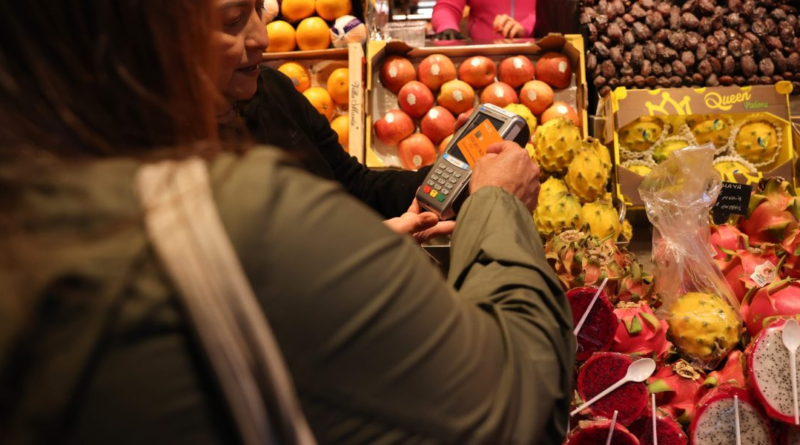American families may soon max our their credit cards, top analyst warns, and be hung out to dry
Struggling U.S. families covering their living expenses with credit card loans may soon run out of options, an analyst has warned, saying a spending correction is on the cards.
American consumers have stayed stubbornly resilient in the face of rising rates and costs of living—even as the Fed has deliberately tried to curb their spending to get inflation in line.
Shoppers were warned their bank balances would be pushed to the “point of pain” in order to get the inflation metric—which went as high as 8.5% in July 2022—under control.
Experts said “YOLO shoppers” were splurging the last of their COVID cash before bunkering down for winter, but ING’s chief international economist, James Knightley, has warned shoppers may be turning to loans in order to keep up with their expenses.
The economist for the global bank highlighted that July’s personal income and spending report had revealed personal spending is remaining strong—up 0.8% month on month and 0.6% in real terms.
Knightley describes such spending as a “really strong platform” for Q3 GDP, which ING is currently predicting an annualized rate of between 3% and 3.5%.
The only problem is, Knightley writes, American consumers are living a lifestyle their bank accounts simply cannot justify.
“The key question is, how sustainable this is?” Knightley writes. “We don’t think it is.”
The jobs market’s resilience goes some way to shoring up the sustainability of consumer spending, the analyst added.
Indeed, jobs data for July showed that nonfarm payrolls (jobs in the private sector and government agencies) expanded by 187,000, slightly shy of the Dow Jones estimate of 200,000. That’s still a modest gain on the figure from June, which had downwardly revised to 185,000.
But a resilient labor market is offset by stagnating wage growth that is trailing behind inflation.
While inflation sits at 3.3%, personal income gained just 0.2% in July, while savings rates fell to 3.5% with shoppers having little left over from their paychecks.
The credit card issue
Knightley noted that fiscal support from the government has run dry, and consumers are pillaging their pandemic savings in order to keep spending.
While households saved $2.3 trillion during various lockdowns, the analyst said the economy is now seeing the opposite: “We have seen savings flows reverse and now we are running them down each and every month, which is not sustainable over the long term.”
Drawing down on savings is being compounded by consumers taking on new loans in the form of credit cards.
The Federal Reserve Bank of New York revealed last month that credit card balances across the U.S. had spiked by $45 billion from the first to the second quarter—up 4.6% to stand at $1.03 trillion.
ING also estimates that of the $2.3 trillion saved during the pandemic, $1.3 trillion has been spent—add that to the volume of credit card debt consumers have now racked up, and the household financial surpluses that were created during the pandemic are now running dry.
Knightley writes that by Q2 2024 the entirety of households’ pandemic war chests will be spent, and added: “Credit card borrowing costs are the highest since records began in 1972 so there is going to be a lot of pain out there.”
And families that may be planning to continue running up debt might soon get no as an answer.
“With banks far more reluctant to provide unsecured consumer credit, based on the Federal Reserve’s Senior Loan Officer Opinion survey, the clear threat is that many struggling households may soon find their credit cards are being maxed out and they can’t obtain more credit,” Knightley wrote. “With student loan repayments restarting, we expect consumer spending to slow meaningfully from late fourth quarter onwards and turn negative in early 2024.”

